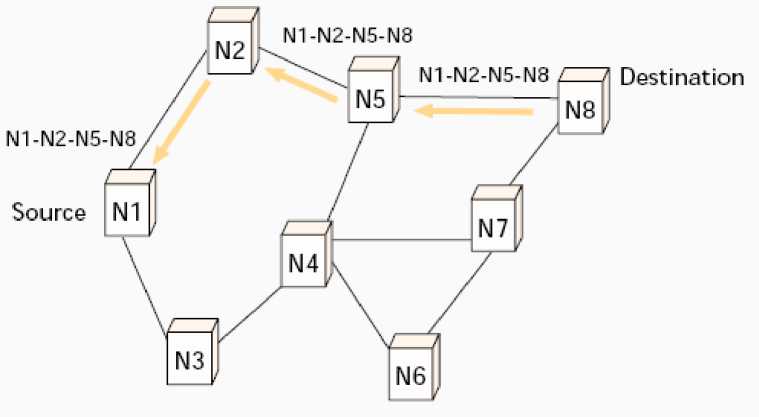if the intermediate node is generating the route reply message then it appends its destination
route cache into the route request message and inserts this information into the route reply
message.

Figure 2.5 Route reply in DSR [58]
Figure 2.5 shows an example of route reply message generated by the destination N8 in
response of a route request generated at the source N1 explained at Figure 2.5. The route
reply message contains the addresses of the intermediate nodes ( N2 , N5) in addition to the
source address (N1) and the destination address it self (N8).
The advantages of DSR are
• The implemented cache in this protocol can keep more than one route to the
destination, the cache contents are ready to be used as soon as the source has
packets to send, without latency time.
• The broadcasting of route request in this protocol is limited, because the
intermediate nodes will not retransmit the same route request.
The main disadvantage of DSR is that it does not scale well with large and dense networks
because the route request message should carry the information about the intermediate node,
which may become a burden for large networks.
22
More intriguing information
1. The name is absent2. Urban Green Space Policies: Performance and Success Conditions in European Cities
3. Happiness in Eastern Europe
4. Do Decision Makers' Debt-risk Attitudes Affect the Agency Costs of Debt?
5. A Hybrid Neural Network and Virtual Reality System for Spatial Language Processing
6. The name is absent
7. CREDIT SCORING, LOAN PRICING, AND FARM BUSINESS PERFORMANCE
8. For Whom is MAI? A theoretical Perspective on Multilateral Agreements on Investments
9. If our brains were simple, we would be too simple to understand them.
10. The name is absent